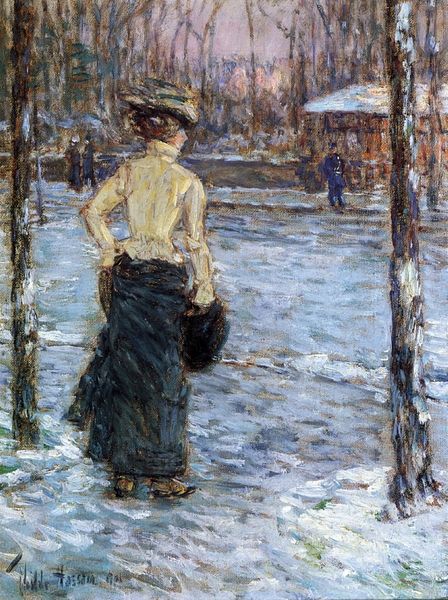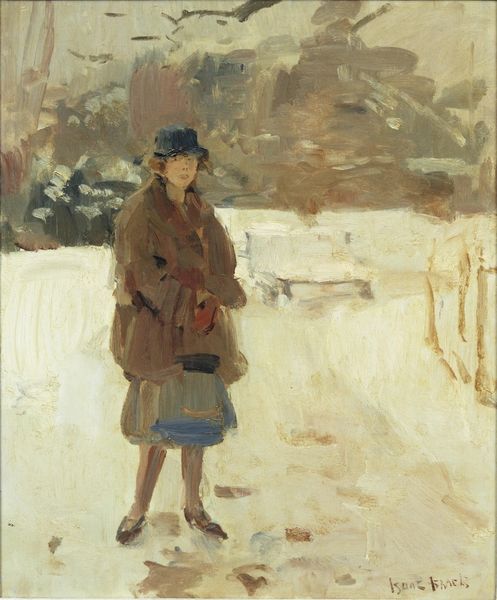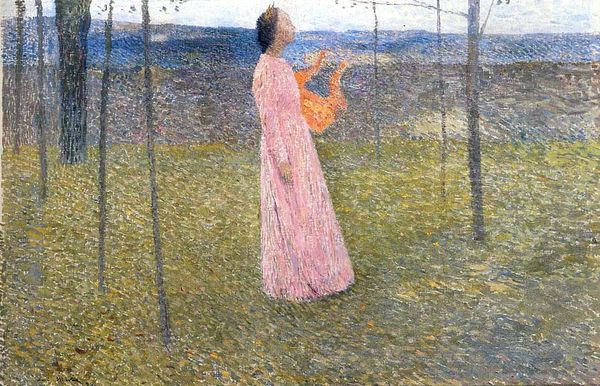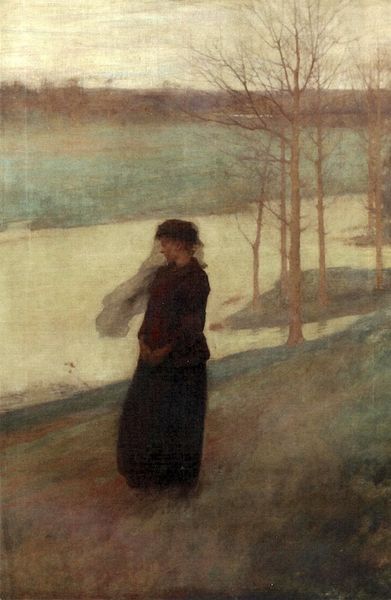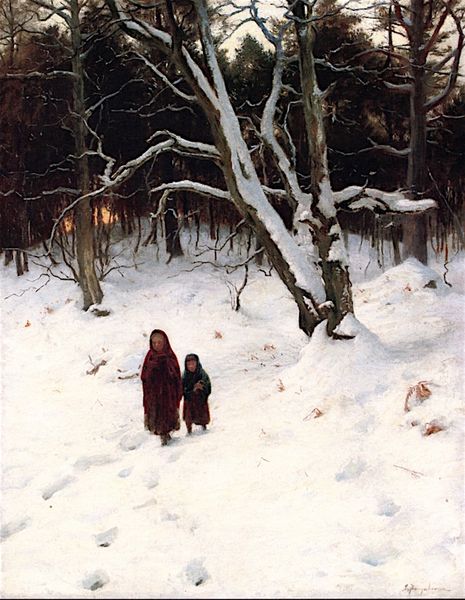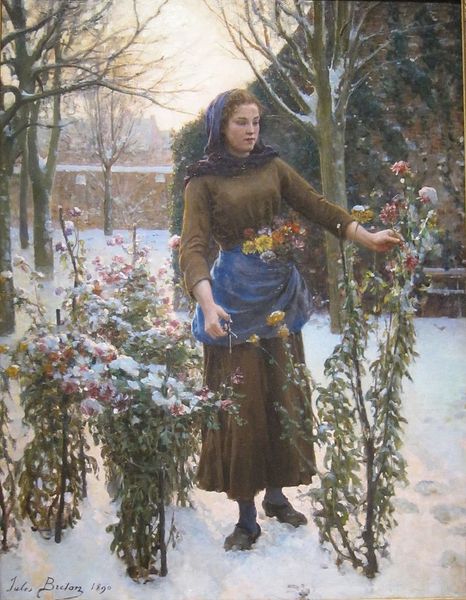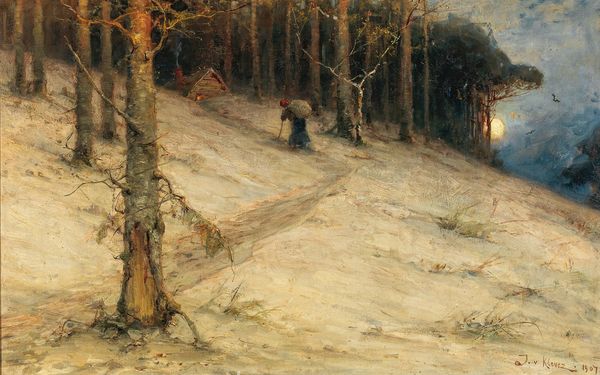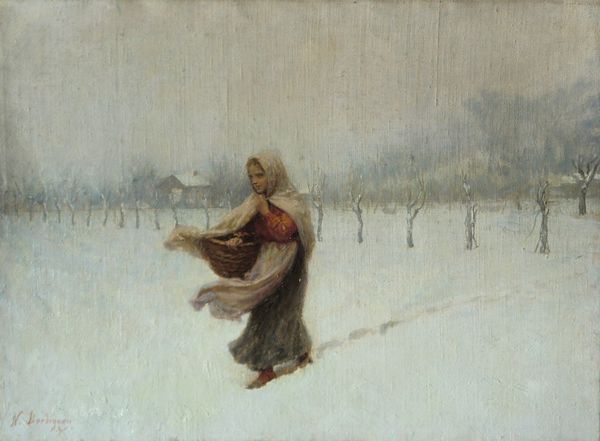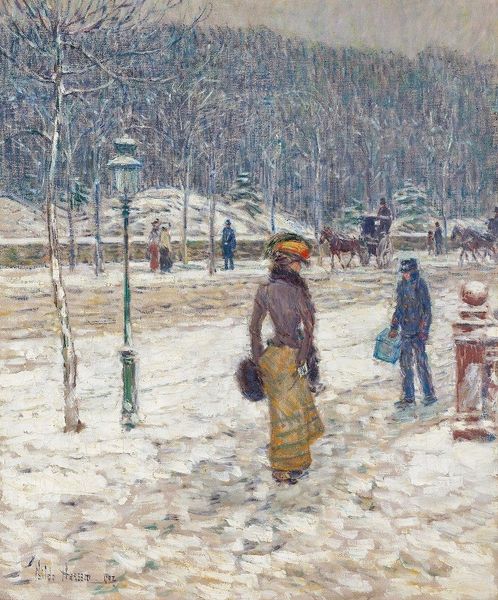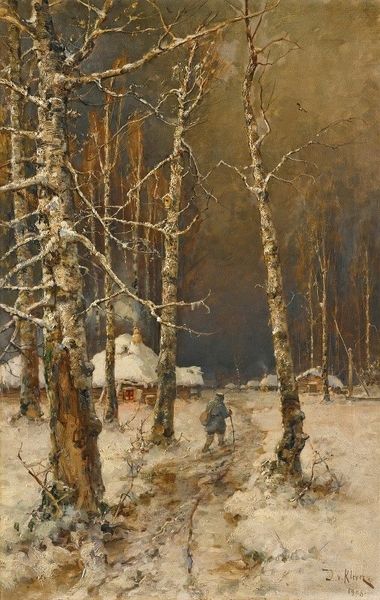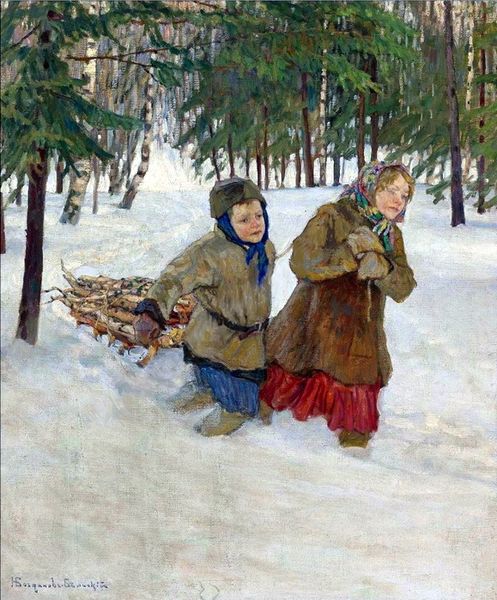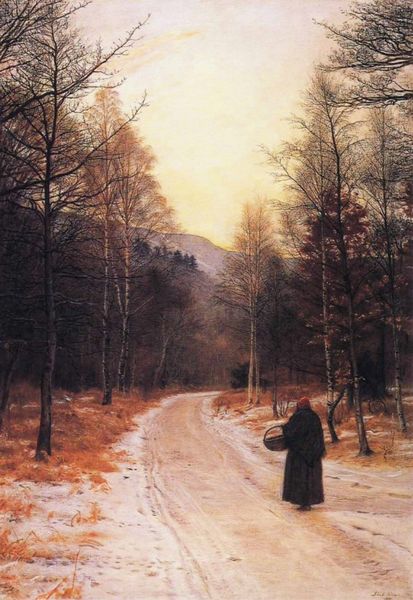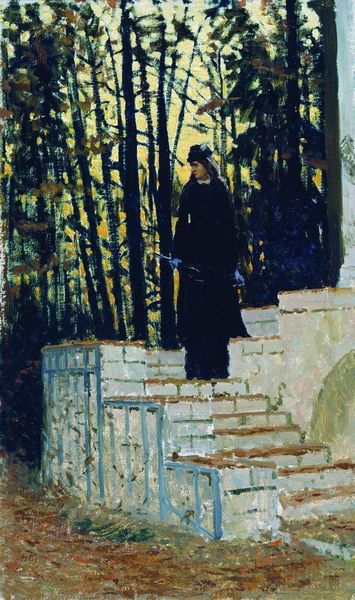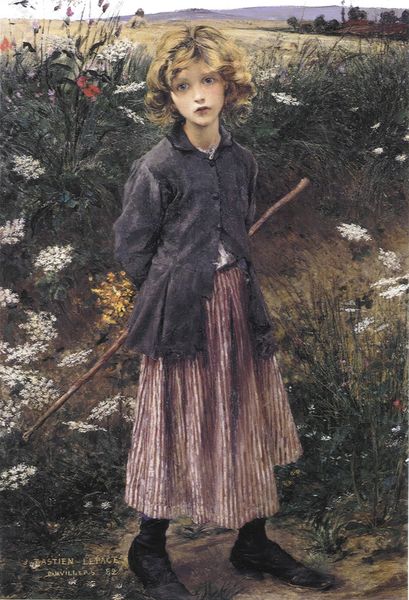
Copyright: Public domain
Editor: So, this is Childe Hassam's "The Snowy Winter of 1918, New York," done in oil paint. It's mostly a landscape, but it has this figure right in the front. There's something melancholy about the scene, like she's caught in a moment of quiet reflection amidst the winter's grip. What do you see in this piece? Curator: Beyond the Impressionistic style and Hassam’s ability to capture light and texture, I find myself drawn to the emotional weight the imagery carries. Winter, especially in the wake of 1918, the year of the Spanish Flu pandemic, is heavy with symbolism. Editor: Heavy, how? Curator: Think of winter’s common associations—death, sleep, waiting, purification. Notice how the bare trees and the pervasive snow serve not just as a backdrop but amplify a sense of isolation, perhaps even a collective mourning? Hassam, of course, was also painting during the aftermath of World War I. This pervasive feeling affected society deeply, and could echo the collective anxiety of the time. What do you think about the red coat of the woman? It strikes the eye immediately, doesn't it? Editor: Yes, the red definitely stands out! It's the only real splash of color, which almost feels defiant against the monochrome winter. Maybe it is hope or resistance, however fragile, amidst despair. It adds a layer of complexity to the somber mood. Curator: Precisely! It speaks to resilience, doesn't it? Even in the harshest conditions, the human spirit endures. And it's a spot of warmth that counters the blue tinted snow. Seeing how artists encode such nuanced feelings into symbols helps us remember those complex emotional landscapes. It's not just history, it's cultural memory being visualized. Editor: I hadn't considered it that way, but I now have so much more to reflect upon!
Comments
No comments
Be the first to comment and join the conversation on the ultimate creative platform.
